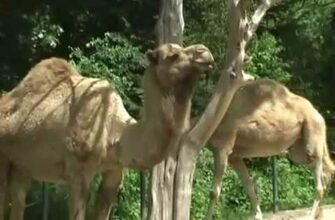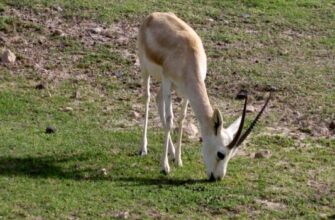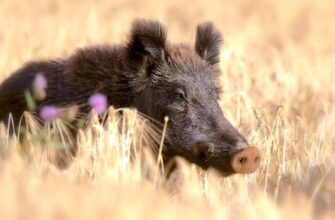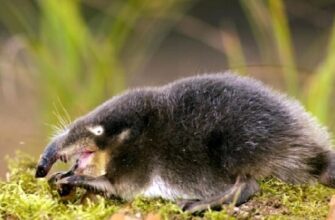The hare hare is a fairly common species of hares throughout the northern part of the planet. Its main feature is, as the name suggests, the unique ability to change the color of its fur to white with the onset of winter. Despite the wide distribution in some areas, in some places these animals were practically destroyed and even included in the Red Book of some countries, for example, Ukraine.
Origin of the species and description
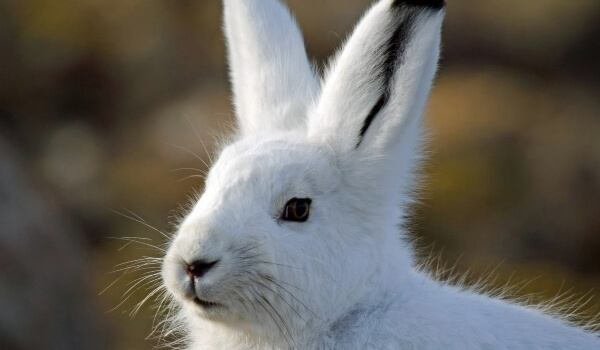
The white hare is a mammal of the genus of hares, a detachment of lagomorphs. It is now commonplace in the northern parts of most continents. The white hare is rightfully considered one of the most ancient mammal species on the mainland. Scientists have found paleontological materials, with the help of which it was established that the habitat of the ancestors of these animals was on the territory of the forest-steppe of Europe. In those days, the forests were shifted to the south. Then this hare could be found on the territory of modern Crimea and the Caucasus.
< p> Living proof of this scientific discovery are small islands of the habitat of the hare in some areas of eastern Poland, England and Mongolia. The end of the ice age, and with it the beginning of deforestation by people and the decrease in glaciers, forced this species to migrate to the northern regions, where there were still forests and they were not in danger of expansion.
Only in Russia, up to 10 subspecies of these hares are distinguished. All subspecies differ from each other in the area of u200bu200bresidence, eating habits, weight, size and other features. However, despite these differences, they make up one species – hare. As the name implies, the distinctive feature of this species is the change in their coat to a pure white color during molting.
Appearance and features
The white hare is a fairly large representative of the lagomorphs. It has thick, soft fur that changes color with the seasons. In winter, the hare becomes the owner of a white coat, although the tips of the ears remain black. In the rest of the year, his fur is colored from gray to brown.
Sizes of a hare hare:
- body length – from 40 to 65 cm;
- body weight – from 1.5 to 4 kg;
- ears – 7-10 cm;
- tail – up to 7 cm.
The size of animals varies depending on the subspecies and habitat. Only in Russia, up to ten subspecies of these animals are distinguished. Females are about a third larger than males. It should be noted that white hare may not change their color in areas where there is little snow. They can also remain white all year round in places where snow lies constantly.
The paws are quite wide, which allows them to easily move through the snow like on skis. There is a thick brush of hair on the feet. The hind legs are very long, which determines the hare’s method of movement – long jumps. Due to the difference in the length of the hind and fore hare, you can recognize them by their characteristic footprints in the snow.
In winter, the white hare in a larger area of u200bu200bresidence changes its color to white. And only in those areas where there is not so much snow, it does not change its coloring. A special place in the life of a hare is occupied by molting, which takes place 2 times a year. Its beginning is directly related to the ambient temperature and changing daylight hours.
However, there are cases when, at the beginning of winter, the animals have already changed their color, but the snow has not fallen. Then the hare becomes very noticeable against the black background of the earth, not covered with snow. Hares have very keen hearing, but their eyesight and sense of smell are much weaker.
Where does the mountain hare live?
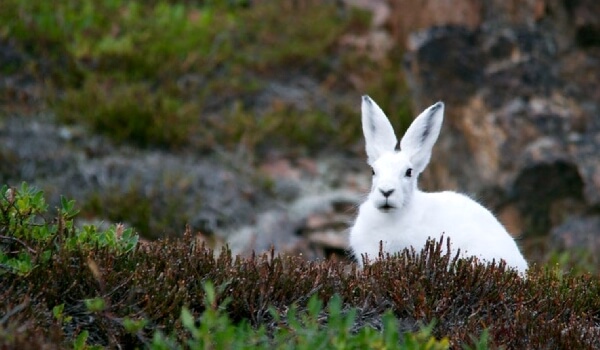
The white hare can mainly be found in the tundra, forests and forest-steppe regions of the northern part of the European continent of northern America. Including on the islands of Scandinavia, Poland, Mongolia, Kazakhstan, Japan and Mexico.
Previously, they lived much further south and were even represented on the territory of the Crimea and the Caucasus, but due to climate warming and the expansive activities of people, they had to change their usual habitat to the more northern regions of the planet.
Belyak living in America much smaller than their counterparts. Often, due to its unusual fur, it becomes a target for hunters in the area. They are called trappers. The hare prefers to live in places where you can easily find food. Migration occurs only in extreme cases, when the hare cannot find food. This usually occurs in areas of the tundra during particularly snowy winters. Dwarf birches and aspens are completely covered with snow.
Thus, the white hare mainly lives in the northern parts of the planet. However, relic areas of its habitat remained. This animal prefers to lead a sedentary lifestyle, but difficult conditions can force it to migrate.
What does a mountain hare eat?
Being in direct proportion to the area of residence and the time of year, hares eat various foods. With the onset of spring, hares gather in small flocks and together eat young grass in the fields and lawns. After winter, the animals lack vitamins and mineral salts. Because of this, they can eat soil, swallow small stones. Hares willingly gnaw the bones of dead animals and antlers shed by elks.
In summer, their diet mainly consists of succulent herbs. In places, the hare feeds on mushrooms and berries. In practice, cases were known when a hare dug up truffles and ate with pleasure. As autumn approaches, the grass begins to dry out. Hares have to survive on coarser food, like shrub branches, dry leaves and mushrooms.
In winter, the bark of various bushes and trees becomes the basis of the hare’s diet. The specific type of wood depends on the region of residence. Most willingly, hares eat the bark of aspen and willow. They are less willing to eat birch and larch, but they are more accessible and common. If possible, the hare can dig out grass, berries and cones from under the snow.
In search of food, a mountain hare can run dozens of kilometers. It often happens that these searches lead the hare to the place where people live. There he can eat the remnants of hay, grain and other food.
Character and lifestyle features
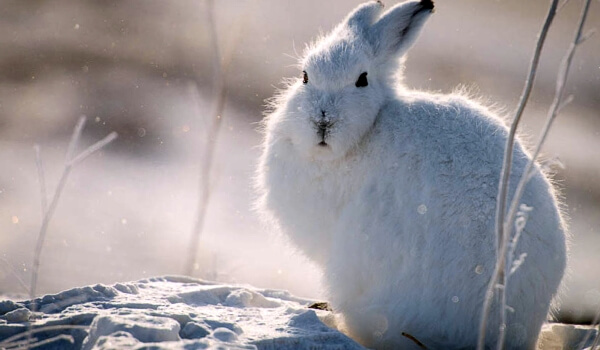
The hare is predominantly a nocturnal animal. During the day, the hare, as a rule, hides or rests, and after dark it gets out to feed. However, if necessary, he can lead a daytime lifestyle. Such a need arises, for example, with an increase in the length of daylight hours.
During one fattening, a hare usually runs about 2 km. However, if he was in search of food, he can run several tens of kilometers. It is worth noting that during bad weather, the hare may not come out at all. In winter, hares dig quite long holes in the snow, reaching 8 meters. This is one of the few forest animals that, in times of danger, prefers to lie in its hole and wait, rather than jumping out of it and fleeing.
Going to feed, the white hare prefers to confuse tracks and move in rather long jumps. To confuse potential pursuers, the hare uses “doubles”, i.e. after a certain period of time he returns along his road and “estimates” — long jumps away from the path.
The ability to unravel hare tracks is very valuable in hunting circles. However, even forest predators and hunting dogs do this with difficulty. If the hare was found, he will have to rely only on the ability to run fast and his long legs. Belyaki are solitary animals. The exceptions are pairs during the mating season and females with cubs. Each animal occupies a plot of 30,000-300,000 m2. . Usually, hares do not change their habitat, their movements are insignificant.
If it is impossible to find food due to snow cover, hares decide to migrate far. Its length sometimes reaches a couple of hundred kilometers. During mass migration, hare stags huddle in a flock of 10-30 individuals, but sometimes its number can reach 70 heads. Upon arrival at the right place, the hares continue to lead a solitary lifestyle.
Social structure and reproduction
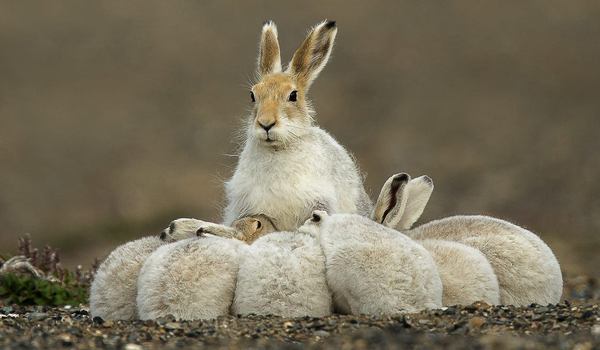
The hare is a fairly prolific animal species. Females have 2-3 estrus per year. The first takes place at the end of winter. The last one is at the end of summer. At the age of nine months, these hares reach puberty. Females reach their maximum fertility at the age of 2 to 7 years.
A hare mother usually does not show any concern for her offspring. The only thing the female does is feed the rabbits several times. It is worth noting that it does not cost a special nest for childbirth. It gives birth either in a small, uncovered hole or among grass, small shrubs or in tree roots.
In one litter, usually from 5 to 7 cubs are hatched, weighing about 100 grams, but sometimes there are 11-12 hares. Little hares appear already with thick hair and open eyes. A couple of hours after birth, they can already move, which distinguishes them from other animals.
The first week the cubs are still very weak and not adapted. At this time, they can only eat mother’s milk, which has a high fat content of about 15%. Then they can switch to plant foods. After two weeks, the hares become completely independent. Despite the fact that there are strictly established dates for the mating season, obvious deviations are sometimes found in nature.
Natural enemies of the hare
The white hare is a harmless and defenseless animal. It has many natural enemies. Both young and adult hares are easy prey for predators. Depending on their specific habitat, they can be attacked by foxes, wolves, lynxes, both diurnal and nocturnal large diurnal and nocturnal birds. However, they do not cause the main damage to their population.
Various diseases become the main cause of mass death of hare hares:
- Lung diseases;
- helminthic diseases;
- Tularemia;
- Coccidosis;
- Pasterells.
Sometimes, due to mass diseases, in a certain area, the number of these animals drops to almost zero. And in order to restore the population to its previous size, it will take several years. It is noted that the greater the number of hares living in the infected area, the more often plagues occur, and the faster the disease spreads. In areas where the population of animals is small, the consequences are not so pronounced, and epizootics do not occur so often.
Also, a high danger to hares comes from adverse climate conditions. Alternately changing thaws and frosts, severe frost and cold rains kill hares en masse and one by one. Such a climate poses the greatest danger to very young hares. In spring, high floods and overflowing rivers lie in wait for hares in floodplains near water bodies. The water that floods everything around makes the hares huddle in hundreds on small islands-hills. There they sit hungry, wet and cold, completely cut off from the land. They will be lucky if the water drains quickly, otherwise death awaits them.
Despite the fact that hares are very prolific animals, they will not be able to fill all the places suitable for life. They face many dangers that are difficult for the animal to cope with. Thus, the annual increase in hares is not large and, as a rule, not higher than the initial stock.
Population and species status
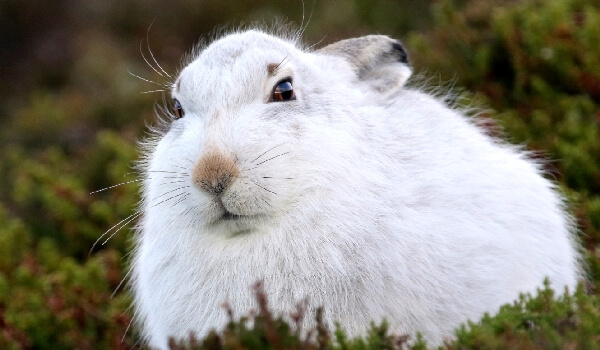
At the moment, about 9 million white hare have been recorded. In recent years, its numbers have increased slightly due to measures to protect this animal. So he was taken under world protection, and in some countries even included in the Red Book. The population size directly depends on environmental conditions. With a mass disease in a particular area, the population can completely die. And the more numerous it was at the time of infection, the faster the disease will spread.
Population density in different habitats varies significantly. Even in neighboring areas, population sizes can vary significantly. The largest population of white hare in Russia is in Yakutia, although only 30% of the entire territory is recognized as habitable for hares. Commercial hunting for these animals is a thing of the past. In its place came sport hunting. On the one hand, it can be used to keep the white hare population within acceptable limits. Although, on the other hand, this activity interferes with the natural circulation of the population, destroying even with a low number of surviving animals.
The vigorous activity of people to transform the environment by cutting down trees destroys the natural habitat of animals, forcing them to migrate farther north . Thus, even non-commercial hunting interferes with the natural restoration of the usual number of white hare. And other human activities that violate the habitual habitat only increase the destructive effect.
Thus, the mountain hare quite easily adapts to new living conditions and can even live close to people. The number of hares is constantly fluctuating under the influence of various factors. Despite all the difficulties that the whites face, in some areas their numbers have increased markedly.

